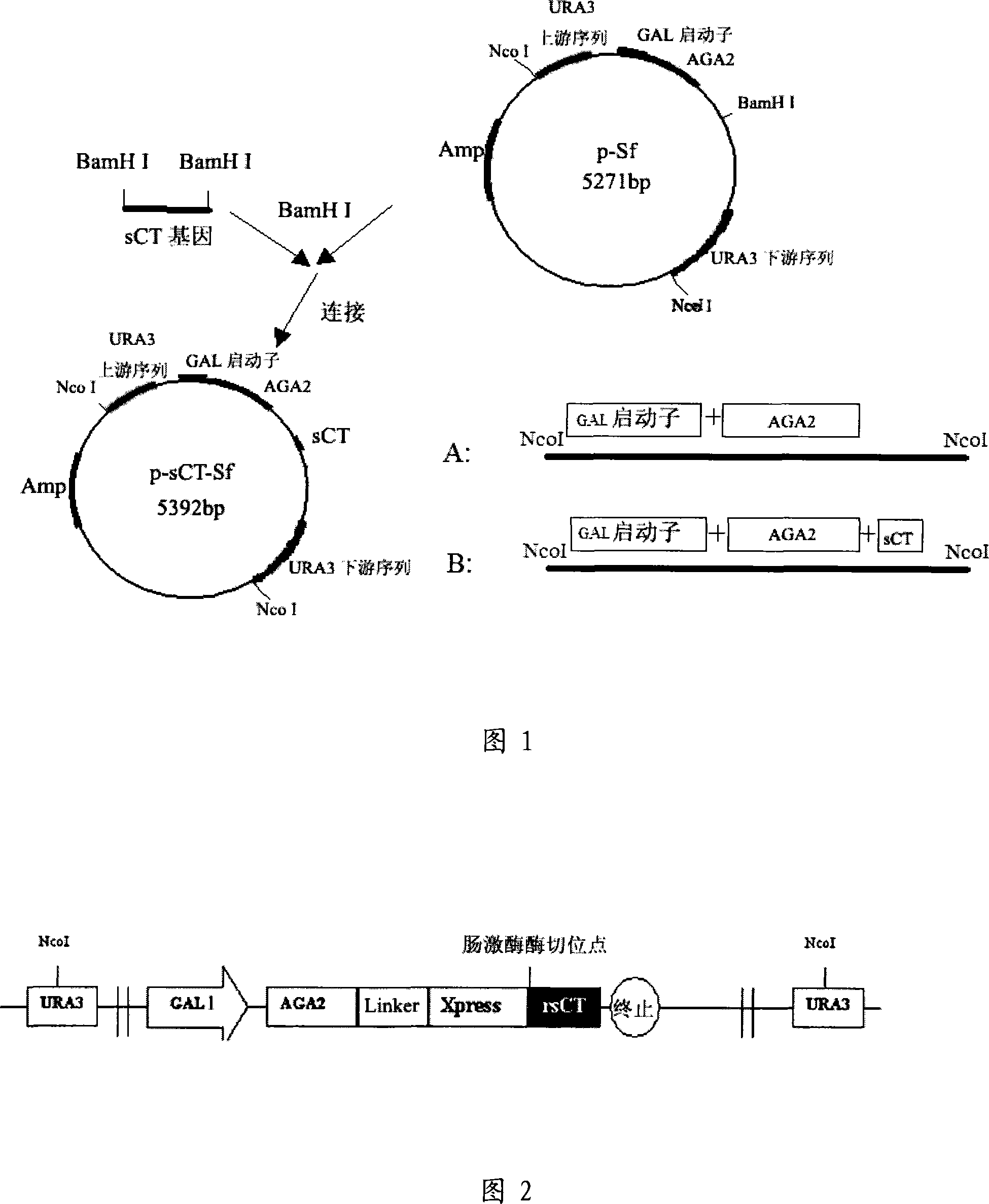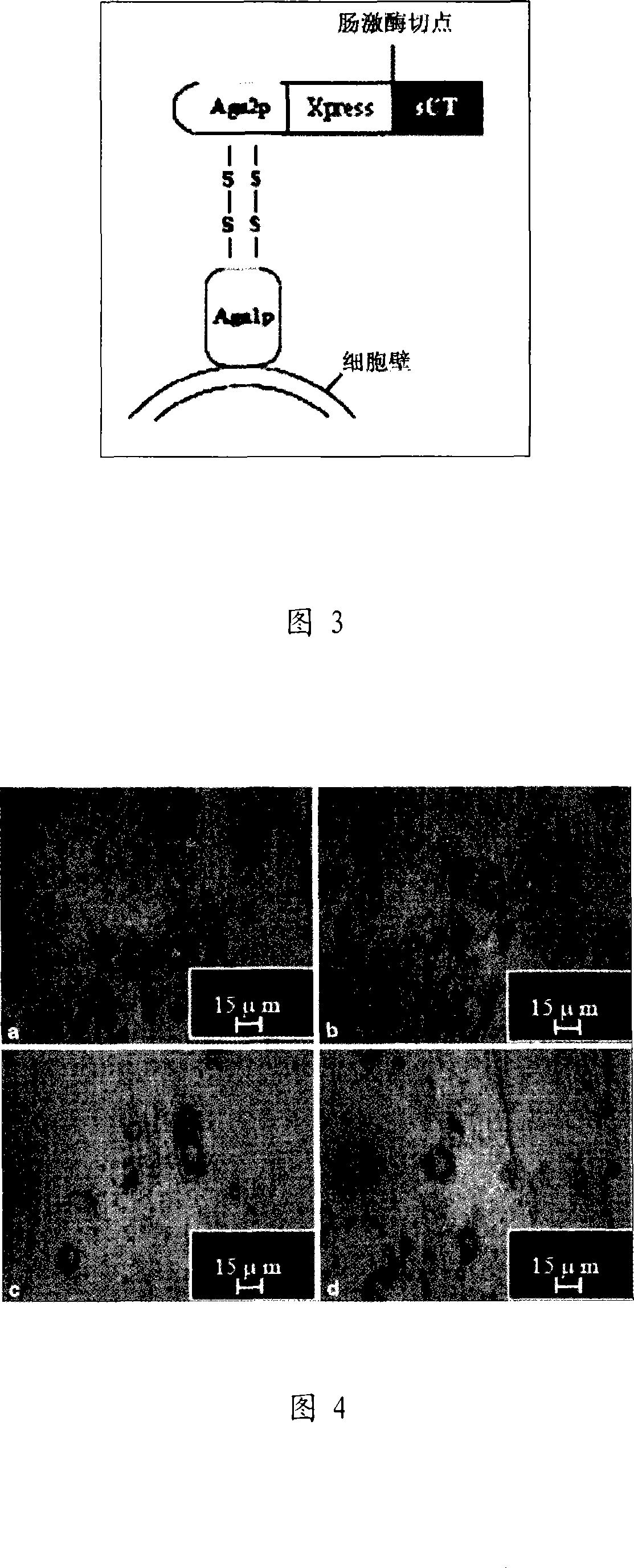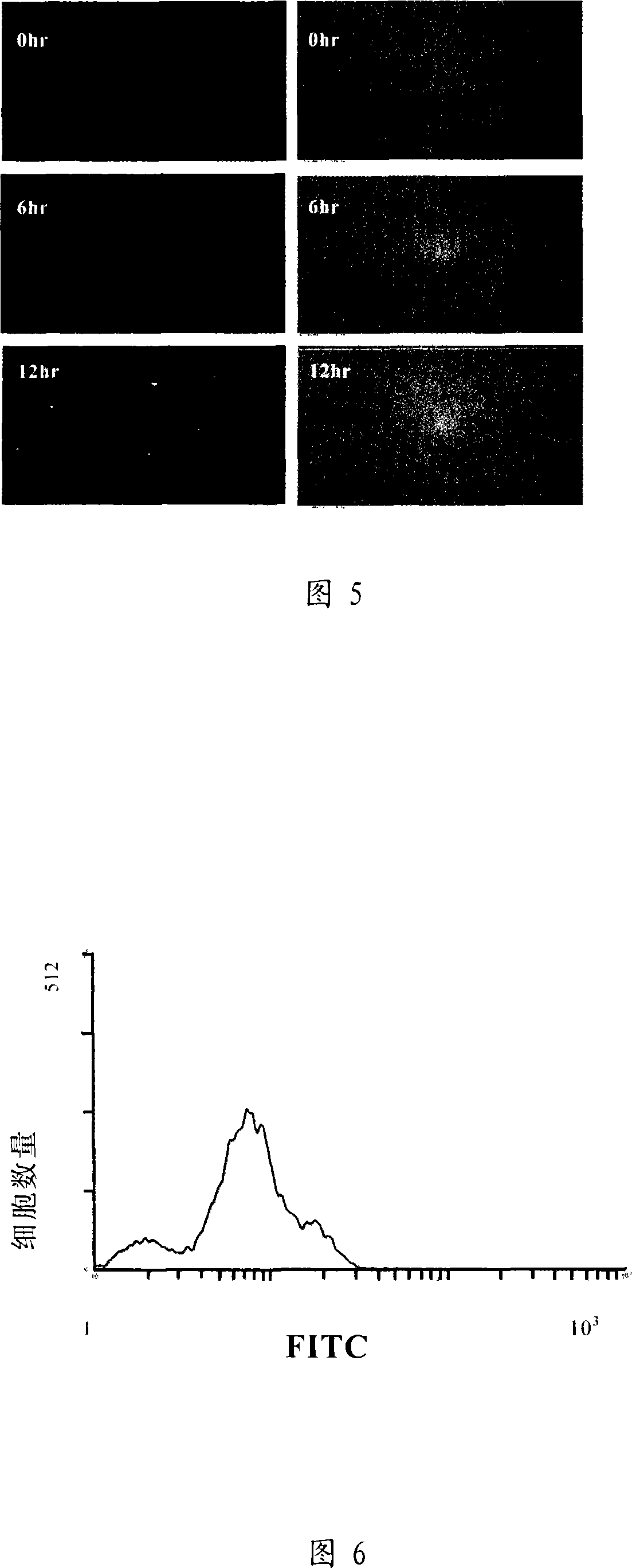Transgenic salmon calcitonin gene yeast as well as preparation method and uses thereof
A salmon calcitonin and transgenic technology, which is applied in the fields of molecular biology technology and bioengineering, can solve the problems of incapability of oral administration, low expression amount and high cost, and achieve oral administration, high expression amount and lower production cost. Effect
- Summary
- Abstract
- Description
- Claims
- Application Information
AI Technical Summary
Problems solved by technology
Method used
Image
Examples
Embodiment 1
[0063] Example 1: Preparation of salmon calcitonin gene-transferred yeast:
[0064] 1. Preparation of salmon calcitonin gene:
[0065] The DNA sequence of the gene was designed by using the preferred codons of Saccharomyces cerevisiae, and the two partial single-strand sCT1 and sCT2 of the salmon calcitonin gene were synthesized by using a DNA synthesizer. Take 80 pmol each of the above single-stranded DNA fragments sCT1 and sCT2, mix them in a final volume of 80 μl of annealing buffer, put them in a water bath at 90°C for 5 minutes, and slowly cool down to room temperature. Add 5 mol / L NaCl to a final concentration of 300 mmol / L and 3 times the volume of ethanol, and place at -20°C overnight; centrifuge to remove the supernatant, and drain to remove residual ethanol. Precipitated DNA was dissolved in 1× buffer of Klenow enzyme reaction solution, containing dNTPs (0.5mmol / L final concentration) and 5U Klenow enzyme, bathed in water at 37°C for about 1 hour, and double-strande...
Embodiment 2
[0087] Example 2: Immunofluorescence assay of salmon calcitonin expressed on the surface of Saccharomyces cerevisiae:
[0088] 1. The cultivation steps before the fluorescent labeling of the transgenic yeast are as described in step 5 in Example 1.
[0089] 2. The steps for fluorescently labeling transgenic yeast are as follows:
[0090] (1) The cultures obtained according to the above time points were centrifuged at 3000-5000 g for 5-10 minutes at 4° C. in a refrigerated centrifuge.
[0091] (2) Wash the culture once in 1×PBS.
[0092] (3) The pellet was resuspended in 250 μl 1×PBS (containing 1 mg / ml BSA and 1 μg antibody).
[0093] (4) Let stand on ice for 30 minutes, shake gently to mix.
[0094] (5) Centrifuge at 3000-5000g for 5-10 minutes in a refrigerated centrifuge at 4°C.
[0095] (6) Wash the pellet again with 1×PBS.
[0096] (7) Resuspend the cells yAGA2-sCT in 1×PBS (containing 1 mg / ml BSA and 1 μg fluorescein isothiocyanate (FITC)-labeled goat anti-rabbit Ig...
Embodiment 3
[0102] Example 3: Flow cytometric determination of salmon calcitonin expressed on the surface of Saccharomyces cerevisiae:
[0103] 1. The cultivation steps before the fluorescent labeling of the transgenic yeast are as in step 5 in Example 1.
[0104] 2. The step of fluorescently labeling the transgenic yeast is as in step 2 in Example 2.
[0105] 3. Read the parameters of the fluorescently labeled cells in the flow cytometer. In Figure 6, the abscissa represents the fluorescence reading, and the ordinate represents the number of cells. Each value in the graph represents the number of cells at that fluorescence reading. In the double peaks in the figure below, the first peak represents the yeast background, and the second peak represents the fluorescently labeled cell population. Flow cytometry can infer the number of expressing cells by automatically calculating the area under the curve. It was observed that with the increase of induction time, the number of cells expres...
PUM
 Login to View More
Login to View More Abstract
Description
Claims
Application Information
 Login to View More
Login to View More - R&D
- Intellectual Property
- Life Sciences
- Materials
- Tech Scout
- Unparalleled Data Quality
- Higher Quality Content
- 60% Fewer Hallucinations
Browse by: Latest US Patents, China's latest patents, Technical Efficacy Thesaurus, Application Domain, Technology Topic, Popular Technical Reports.
© 2025 PatSnap. All rights reserved.Legal|Privacy policy|Modern Slavery Act Transparency Statement|Sitemap|About US| Contact US: help@patsnap.com



